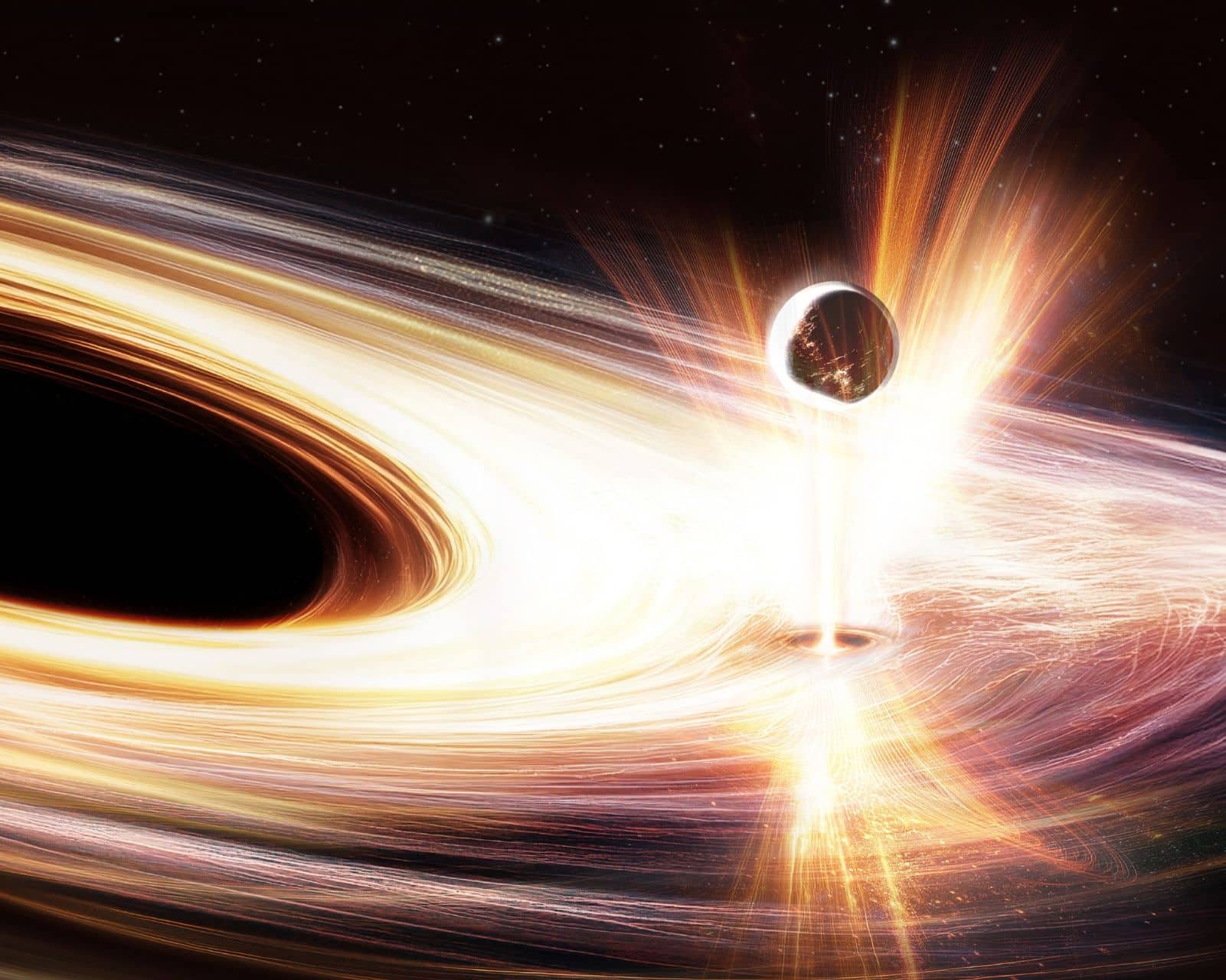

A massive black hole in a distant galaxy stunned astronomers as it suddenly erupted with powerful bursts of energy, marking a dramatic shift from its long-standing silence.
The black hole sits at the center of the galaxy SDSS1335+0728, located about 300 million light-years from Earth. For years, it appeared inactive. But in late 2019, researchers detected signs of change. By February 2024, using NASA’s Swift X-ray telescope, they observed a striking pattern: bright flares emerging at regular intervals.
These outbursts, known as quasiperiodic eruptions (QPEs), signal that the black hole is entering an active phase. As it pulls in nearby material, it releases short, intense flashes of X-rays. This behavior points to the presence of an “active galactic center”—a region powered by a supermassive black hole consuming matter. Scientists have nicknamed this energetic core “Ansky.”
The event offers a rare opportunity to observe a massive black hole as it transitions from dormancy to activity. Experts say Ansky’s flares are some of the longest and most powerful QPEs ever recorded.

“The bursts of X-rays from Ansky are ten times longer and ten times more luminous than what we see from a typical QPE,” said Joheen Chakraborty, a researcher at the Massachusetts Institute of Technology, in a statement. “Each of these eruptions is releasing a hundred times more energy than we have seen elsewhere.”
What makes Ansky’s case even more unusual is the timing. The eruptions occur in a steady rhythm, roughly every 4.5 days—the slowest pattern ever documented for QPEs.
“This pushes our models to their limits and challenges our existing ideas about how these X-ray flashes are being generated.”
To track the black hole’s behavior, researchers used a combination of space observatories. These included the European Space Agency’s XMM-Newton, NASA’s NICER and Chandra telescopes, and archival data from the eROSITA mission.
Despite the detailed observations, scientists remain uncertain about the cause of Ansky’s eruptions. In previous cases, QPEs were linked to black holes tearing apart nearby stars. However, there’s no clear evidence of that kind of destruction here.
“For QPEs, we’re still at the point where we have more models than data, and we need more observations to understand what’s happening,” said Erwan Quintin, a research fellow at the European Space Agency.
“Ansky’s eruptions seem to be telling us a different story.”
Quintin also pointed to the future of black hole research. He noted that these X-ray flares could be tied to gravitational waves—ripples in space that missions like LISA, the ESA and NASA’s joint space-based observatory scheduled for 2037, may one day detect.
“It’s crucial to have these X-ray observations that will complement the gravitational wave data and help us solve the puzzling behaviour of massive black holes.”
